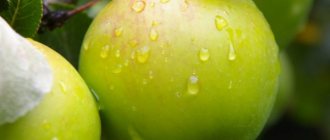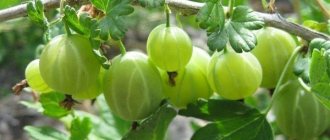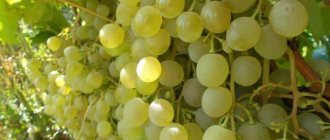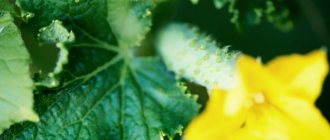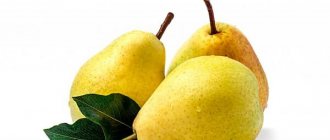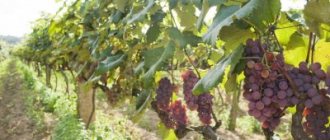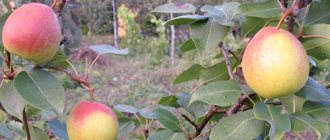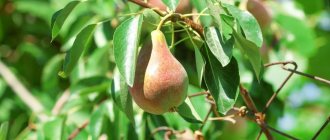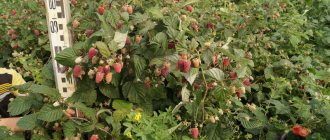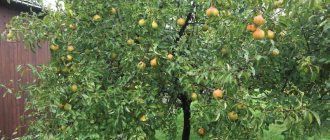Reviews
Marina
Dzherzhinsk
Delicious fruits of this variety last until the new year. They bear fruit annually, without frequency or change. I'm very pleased with the tree!
Basil
Moscow region
Someone told me that the variety is unpretentious. But this is not entirely true. There was a year when the tree froze and often got sick. I tolerate it because the harvest is delicious, it lasts a long time and is enough for compote.
Irina Pavlovna
Ukraine
I have several varieties growing at my dacha, Abbot too, and he is a pollinator for both summer and winter, partly because it blooms profusely and for a long time. I mainly store pears in the cellar.
Vladimir
Latyshevka
I love the Abbot variety; I used to constantly buy fruits at markets, but now I planted them in the garden myself. The tree is 4 years old and has only bear fruit once so far, but we collected 2 buckets. I'm pleased with the taste.
Reviews of Abbot Fetel pear
Andrey Ivanovich Malychev, 56 years old, Podolsk
I know this variety, but so far only as a consumer. When I was on vacation in Spain I tried a lot of things in August, including the Abbot Fetel pear. I liked it. The skin is actually thin and the flesh is tasty. There's even a scent. Now I’m thinking about maybe planting it myself. If the harvest is small, as they say, then there will still be enough for our family, not for sale. But if our sun is not enough or we don’t like the earth, then it will be a pity for the tree.
Marina Yuryevna Smolyar, 52 years old, Serpukhov
My friend planted 2 of these trees in her dacha about 8 years ago. As I understand it, she didn’t put much effort into them and didn’t complain about them. They grow like other fruits. In the fall we pick these pears straight from the tree and eat them. Not to say that it is one thing to eat, but a normal fruit. She doesn't leave it for storage. But on the other hand, she makes delicious compotes from pear halves. Only for compotes you need to remove the fruits early, and for jam - later, let the fruits ripen well.
Landing
In order for a tree to develop properly, there are a number of requirements for the correct planting technology. Follow the link to learn more about the peculiarities of planting the Abbot Fetel pear variety.
How to plant a pear tree correctly
At what distance to plant pears?
How to choose pear seedlings
How to replant a pear
Diversity and general varietal characteristics of the Bere family
The large Bere pear family includes dozens of varieties that are popular in many regions of the world and are widespread, especially in Europe. Most of them have taken root in our country - mostly in the Central Black Earth region, Krasnodar Territory, Crimea, and western regions. They are also successfully cultivated in Georgia, Armenia, Moldova, Ukraine and Belarus. All varieties of Bere have gained popularity due to their outstanding characteristics in comparison with other types of pears. Some of these served as the basis for selection both abroad and in Russia.
Bere pears are typically vigorous trees with a tall pyramidal crown that becomes broad and somewhat asymmetrical over the years. The shoots and trunk of the tree are thick, with a predominant grayish color of the bark. They have large ovate leaves. It blooms relatively late, so the inflorescences are not subject to return frosts.
Like most pears, this variety prefers fairly warm climates and is demanding in terms of growing conditions. A detailed description of the variety helps in choosing the best option for a specific cultivation region.
Care
There are a number of care features that must be observed when using the Abbot Fetel variety. They relate to watering, fertilizing, pruning, and preparing for cold weather. You can read more about the rules of agricultural technology in the selection.
How to care for a pear Pruning a pear Pruning a columnar pear Treating a pear from diseases and pests Feeding a pear How to water a pear
Advantages and disadvantages of the variety
Like any other variety, Abbot has its strengths and weaknesses, which directly affect the choice of gardeners.
- The advantages of this pear include the following characteristics:
- good presentation of the fruit;
- excellent taste, sweetness of ripe pears;
- the possibility of long-term storage of pears, in comparison with many other varieties;
- transportation without loss of product characteristics;
- high resistance to popular diseases: scab, black cancer, bacteriosis, rot;
- self-pollinating.
- Disadvantages of this pear:
- low frost resistance of the plant, but this problem can be solved by organizing a winter shelter.
Diseases and pests
The Abbot Fetel pear variety is distinguished by good immunity to diseases and harmful insects. But in some situations, conditions of increased risk and mass infestation, trees may suffer.
In the selection you can get acquainted with common diseases of pear trees and pests.
Dangerous Pear Pests
Pears often suffer from pests, they affect the leaves, bark and fruits.
In this article, we have selected 11 of the most harmful insects that harm pear trees, and also ways to destroy them.
Diseases of pear trees
To get what they cherish, gardeners have to work hard, and the reason for this is pear diseases.
Read about 19 common pear diseases and how to combat them.
Characteristics of the variety
- The beginning of fruiting depends on the rootstock. On the forest pear tree, our hero will bring a harvest only for the 7th year. But quince is a more successful option; a plant grafted onto it will enter the fruiting period 4 - 5 years after planting. True, compatibility does not occur with any quince; good survival rates are only on SYDO (clonal selection of Anjou quince), MS and EMX * (obtained at the East Malling horticultural station in the UK). In our nurseries they use either wild pear or quince type A or C;
- flowering occurs in the mid-late period, so there is no need to be afraid of frost;
- According to the ripening period, Abbot Fetel belongs to the autumn crops. Harvesting maturity occurs in September, at the beginning or middle of the month, depending on the weather. Consumer maturity - late September or early October;
- The yield is average and again depends on the rootstock. On quince, 5-8 year old trees yield an average of 38.6 c/ha. On the forest pear, productivity increases slowly. By the age of 12, the yield is 10 - 18 c/ha. Simirenko describes fruiting as scanty and irregular. But then they were just experimenting with rootstocks;
- winter hardiness is not bad; in unfavorable years, when thaws gave way to frosts, the damage rate to the trunk did not exceed 1 point. Frost resistance is average. There is resistance to frost, but in very severe winters the tree may freeze. True, thanks to its good restorative ability, it is quickly revived. But when choosing a variety, it is worth considering that the crop is more common in warm climates;
- immunity is good. There is resistance to scab, bacterial leaf scorch marks a slight lesion - 1 point;
- Abbot Fetel is self-fertile. But still, in order for the pear to please with a harvest of unusual fruits, pollinators are needed nearby. The following varieties are offered as neighbors - Conference, Williams, Carmen, Decana del Comizio;
- Due to the dense consistency of the pulp, the fruits withstand transportation over long distances well;
- keeping quality is very good. Pears can be stored in the refrigerator for about a month, in the basement, subject to storage standards - 3 - 4 months;
- The method of consuming fruits is universal. They are used fresh and for processing and are valuable for the food industry.
Preparing for winter
The variety's resistance to cold is mediocre. They are grown in the central zone of the Russian Federation and further south. But at the same time, it is necessary to prepare the tree for cold weather. These are several actions:
- Feed the tree with fertilizers in the tree trunk circle.
- Pruning, spraying, and whitening the trunk.
- Insulate the tree trunk circle with spruce branches.
- Wrap the tree with non-woven material, burlap or film.
In the spring, during the first warm days, you need to remove the cover so that the bark does not rot.
Which regions is the variety more adapted to?
Abbot Vettel was originally grown only in southern countries. Now this variety has begun to be planted in the Central region of Russia, Ukraine, and Belarus. Pear has adapted well to life in the Middle Latitudes. True, the tree needs to be insulated for the winter.
Having successfully overwintered, the tree awakens in the spring, bears fruit in the summer and ripens in the first half of September. Fruits are picked from the tree while still unripe. Dense and healthy fruits are removed along with the stalk. During harvesting, it is advisable not to scratch or drop pears, otherwise they will quickly deteriorate. Store fruits in a dark, dry, cool room, at a temperature of 0 to 5 degrees Celsius.
Characteristics of the tree and fruits
The tree grows up to 3–4 m tall, has a wide pyramidal crown, a brownish-brown trunk, chocolate brown branches, medium-sized leaves, dark green, smooth, the pointed apex is slightly bent back. The flowers are large, white, cup-shaped.
Abbot Vettel himself forms the crown; the gardener can only make sure that it does not thicken, cut out the shoots that grow in the middle, or the tops. The tree itself perfectly arranges its skeletal branches. Regular pruning is only sanitary and rejuvenating in nature, but it still needs to be done carefully, and be sure to treat the cuts with garden varnish. According to gardeners, the shoots of a young tree need to be bent away from the trunk; they move away from it at an acute angle and tend upward.
The wood is very strong and beautiful, it is easy to process. Therefore, the German concern Target launched the production of laminate with the name of the pear variety. The fine texture, creamy-pinkish, with a brown pattern looks very advantageous, and treated with special compounds, it has been used perfectly for at least 25 years.
Fruiting begins at the age of 3–4 years; it is recommended to cut off the first ovaries, leaving no more than a quarter, otherwise the harvest will weaken the tree too much. A full harvest can be harvested after 7–8 years; in the absence of extreme cases, the tree bears fruit every year for 20 years, and with proper anti-aging pruning, even more.
Large, elongated fruits are covered with a green, slightly rough skin; by the time they are fully ripe, they become yellow-green with a red blush on the sunny side. They are distinguished not only by their size (on average 200–250 g), but also by a very pleasant sweet taste with spicy notes. The fruits contain vitamins, microelements, pectin, sugar (less than apples). They strengthen the immune system and contain few calories. They are eaten fresh, jams, preserves, compotes, and candied fruits are prepared from them.
Selection of seedlings and planting dates
Pears are planted during the plant's dormant period - in autumn and spring.
Experienced gardeners advise paying special attention to the choice of seedlings. One-year and two-year planting material takes root well. The peculiarity of the pear is cross-pollination.
In one area, it is advisable to grow two or three trees, which may differ in terms of fruit ripening and coincide in terms of flowering. Autumn plantings are preferable for pears. They are performed before frost sets in.
Agricultural technology for growing Abbot Vettel in the Moscow region
It should be said that in terms of its frost resistance, this pear variety is intended primarily for cultivation in the southern regions. Already at temperatures of -20 degrees, trees can freeze, which subsequently leads to a significant weakening of the plantings and their death.
However, the problem of mediocre frost resistance can be solved by high-quality insulation of plantings. If the gardener properly insulates the trees, even in the conditions of the Moscow region, this variety will bear fruit well and allow you to get a high-quality harvest.
It will be necessary to mulch the soil of seedlings and young trees. They are also additionally covered with plastic film, various construction thermal insulators and spruce branches. Mature trees must also be covered with roofing felt to protect them from rodents, as well as spruce branches to protect them from frost.
We can also recommend that the gardener, when the first snow falls, shovel the snow directly to the tree trunk, which will solve problems with hypothermia of trees in harsh winters. Otherwise, caring for plantings does not present any difficulty. It will be necessary to regularly trim trees, apply fertilizers and provide high-quality watering to the plantings.
In order for a pear to bear fruit well, it is important not only to properly care for it during growth, but also to follow the rules for planting seedlings.
Selection of seedlings
The quality of the tree depends on how healthy the seedling is. Planting material should be purchased in specialized stores or nurseries. When choosing a tree, you need to pay special attention to the root system. The roots should be well developed and not damaged.
Be sure to inquire about the age of the seedling. The best option is considered to be those that have reached 1.5-2 years. They have the best adaptive qualities.
Landing
In order for the seedling to take root well, it is necessary to choose the right planting site. This variety is highly dependent on soil quality and climatic conditions. The best soil for it is considered to be fertile soil, rich in oxygen and neutral acidity.
If there is no such soil, additional preparation of the soil for planting will be required by adding fertilizers to it. Also, the tree does not tolerate excessive moisture, so you should take care that there is no groundwater near the planting site. If the area is low-lying, you will have to make an additional embankment where the pear will be planted. Thus, the “Abbot Vettel” seedling should be planted in the following areas:
- with fertile soil;
- no accumulation of moisture;
- not on clay or loamy soils;
- near the rowan tree, since pests can move from this tree to the pear;
- in a draft;
- in a shaded place. In the absence of sun, the yield may decline sharply. In addition, it will not be as plentiful and tasty as under the rays of daylight
It is important to properly prepare the hole for planting. It should be up to 1 m deep and at least 1 m in diameter. A small mound forms at the bottom of the pit. Before placing the seedling on the embankment, it is necessary to carefully straighten the roots. Then the tree is placed on the mound made so that the roots point down in accordance with their natural growth.
After this, the hole is gradually filled with soil dug out from the hole and mixed with compost, peat and sand. After each layer, the soil is thoroughly compacted. When the hole is completely buried, the seedling is watered abundantly. For 1 tree – 30-40 liters of water.
IMPORTANT! The water should be warm and settled.
The top layer of soil is mulched with a mixture of peat, sawdust and humus. However, one component will be enough.
The distance between seedlings is maintained at 4-5 m. A support peg is installed near the trunk at a distance of 0.1-0.2 m, onto which the seedling is tied.
Caring for the Abbot Vettel pear tree consists of operations common to gardeners:
- watering;
- feeding;
- pruning;
- prevention and treatment of diseases and parasites.
This variety is quite drought-resistant, and therefore it is enough to water the seedling once a week. An adult tree does not need additional watering at all, since it only needs to receive moisture 3-4 times throughout the entire season.
Fertilizing is also not applied too often. If the hole is made correctly during planting, then in the first 2 years after planting, the seedling does not require fertilizers at all. In the third year, it is necessary to feed the tree 2-3 times during the growing season.
In the spring, you need to apply fertilizers containing nitrogen: urea, saltpeter, ammonium sulfate. In summer and autumn, the tree is fed with a phosphorus-potassium mixture.
Pruning is done in order to control the density of branches. In the spring, branches that have died over the winter are pruned. In the fall, if the gardener carefully monitored the fruiting of the tree, it is necessary to remove the shoots on which pears did not form. All cuts are treated with garden varnish.
The Abbot Vettel pear is resistant to most diseases. However, in order to avoid the appearance of diseases, it is necessary to treat the tree in the spring with preparations containing copper. Spraying with Bordeaux mixture is also recommended. The most important thing that a gardener needs to know is that all treatments should be carried out before the ovaries appear.
